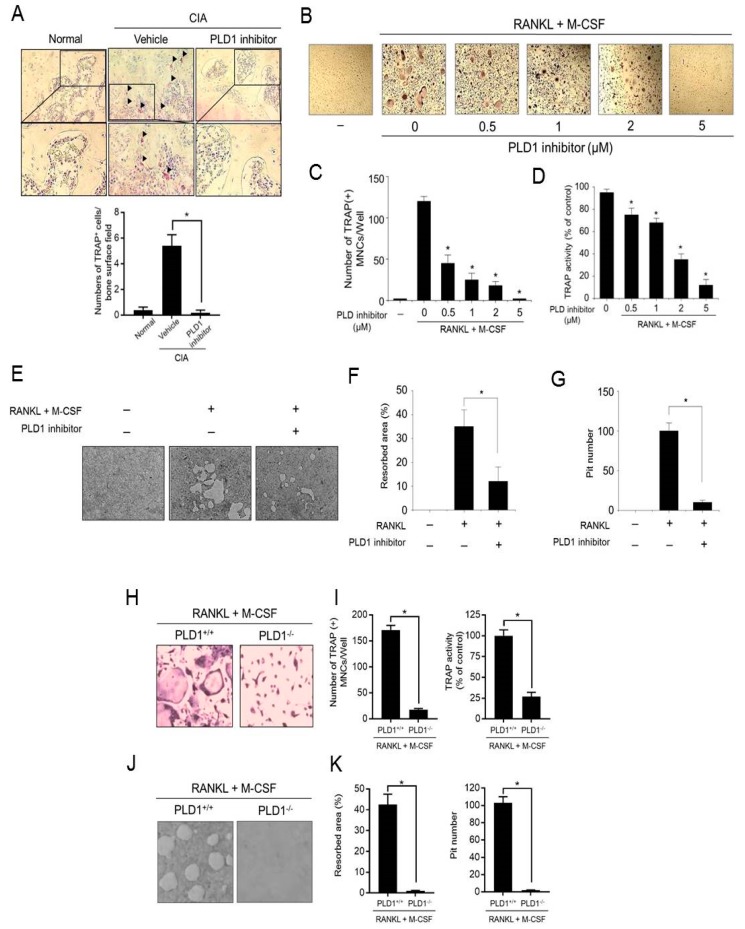Figure 7.
Targeting of PLD1 reduces osteoclastogenesis and bone resorption. (A) Representative histological images of tartrate-resistant acid phosphatase (TRAP) staining for osteoclasts (red) at a region distant to the site of inflammation in the proximal tibia of mice from different groups at day 45. (B) Representative TRAP staining images of osteoclasts differentiated by RANKL and M-CSF induction in the presence of the indicated concentration of the PLD1 inhibitor in murine bone marrow cells (BMMs). (C,D) The cells were stained with TRAP and the number of multinucleated (nuclei ≥ 3) TRAP+ cells (C) and TRAP activity (D) were counted. (E) Representative images of bone resorption assay in differentiated osteoclasts. (F,G) Effect of the PLD1 inhibitor on the relative bone resorption area (F) and pit number (G). Representative TRAP staining images (H) and TRAP-positive cell numbers and TRAP activity (I) of the osteoclasts differentiated from BMMs from PLD1+/+ and PLD1−/− mice. Representative bone resorption images (J) and resorbed area and pit number (K) of the osteoclasts differentiated from BMMs from PLD1+/+ and PLD1−/− mice. n = 6 per group. * p < 0.05. Results are representative of at least six independent experiments and are shown as mean ± standard error of the mean (SEM).

